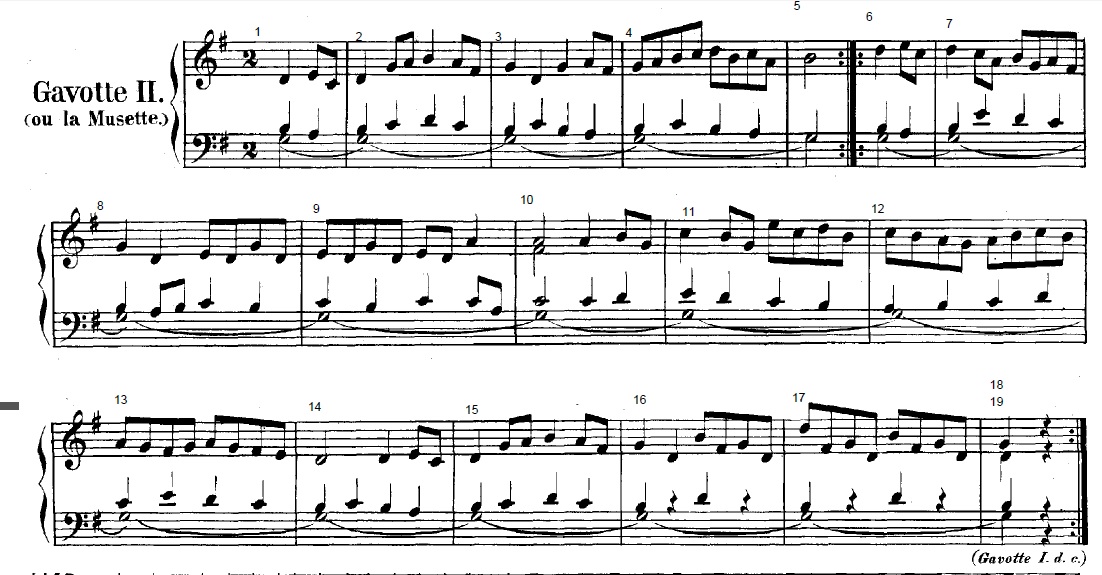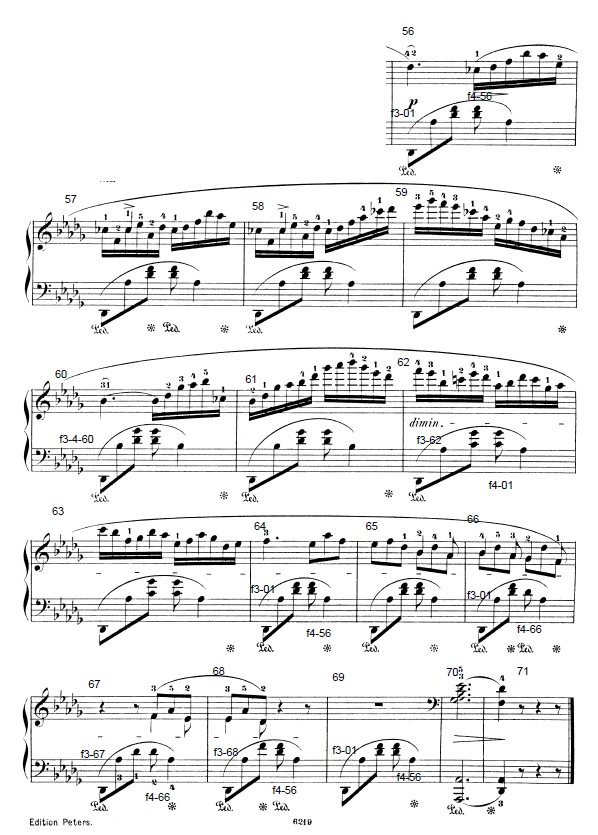Here’s the piano part only, but in 12 tone equal.
This is the complete movement, all 33 measures.
or download here:
Korte #3
And a version a bit slower.
or download here:
Korte #4
Casting about for a piece my cellist son could play at my daughter’s upcomming wedding, I googled Bach Cello March. This piece came up. It’s something my son played in Suzuki cello studies in 3rd grade. I bet he could kill it today, now that he’s in his late 20’s and has a great instrument.
Bach wrote it as one movement of a cantata, Vereinigte Zwietracht der wechselnden Saiten, BWV 207, for orchestra, soloists, and chorus. He was commissioned to write it to celebrate the appointment of Gottlieb Kortte as professor of Roman Law at Leipzig University in 1726. The title of the cantata translates as “United discord of quivering strings”, which sounds like a title Henry Brant might come up with. Do you suppose Bach had a sense of humor? Has anyone written “Johann in Love”?
The title, “Kortte lebe, Kortte blühe” translates as Kortte Live Kortte Flower. Let’s hope the good professor Gottlieb took the advice and flowered his Roman law like the best of them.
Dr. Suzuki transcribed the theme as a child’s piece for piano and cello.
I’m wondering if I could tune it to my G major on C Otonality scale that I used for the Gavotte II. Today’s presentation is the first 16 measures.
or download here:
Korte #1
This one is another trip down the drunkard’s walk. Some earlier versions are here, here, & here. This is a work in progress.

or download here:
Gavotte II Transformed #4
This one is another drunkard’s walk, but with the addition of making choices between two different 6th degree ratios (the E in the piece), and two different 7th degree ratios (F#).
The algorithm switches between E as 5:3 above G, and E+ as 7/4 above G. It can choose F# as 23:12 or F+ as 11:6 above G. Sometimes they can pick two different tunings at the same time. The difference is pretty minor but it does sound more harsh this time. This is a work in progress.

or download here:
Gavotte II Transformed #3
This is a transformation of Bach’s English Suite #3 Gavotte II movement, BWV 808. The original is here. For the transformation, I allow my preprocessor to chose which measure to play using the Markov Chain Drunkard’s Walk algorithm. I have a list of all the measures in order, and let the preprocessor choose which one is next, constrained to either the next or previous in the list. For example, if measure 5 is chosen, then the next measure to be played can be either 4 or 6, forwards or backwards in the list. If I’m at the end or beginning of the list, it wraps around. There are only 19 measures in the movement.
I start the piece by playing the first five measures in order, then start the randomizer. The next ones chosen for this run through were the following:
Eventually our drunk wanders across the entire piece after about 100 choices. At the end, I play the last five measures straight.
or download here:
Gavotte II Transformed #2
Today’s creation is a realization of the 2nd Gavotte in Bach’s English Suite #3 BWV 808 on Prent’s Microtonal Slide Bosendorfers. There are two Gavotte’s in the suite. The first is in G minor, and the second in G major. The score indicates several repeats, including the request to repeat the first after the last repeat in the second. I’ve only completed the second Gavotte, in G major. The tuning is taken from the 31-limit tonality diamond. I used a G major scale derived from the 16 notes in the C otonality. The are a nearly perfect diatonic just scale, with the exception of the F#, which should be a 15:8 above the G tonic, but is actually 23:12, 38 cents sharp. And out of tune with the perfect 4:3 C. It has a perfect F tuned to 7:4, but alas that’s a note that Bach did not include.
Here is the complete scale:
| Degree | Name | Ratio |
|---|---|---|
| 1 | G | 1:1 |
| 2 | A | 9:8 |
| 3 | B | 5:4 |
| 4 | C | 3:2 |
| 5 | D | 4:3 |
| 6 | E | 5:3 |
| 7 | F | 7:4 |
| G | F# | 23:12 |
| 1 | G | 2:1 |
or download here:
Gavotte #1
This is a revision only to fix some spurious volume errors and add a trill to a note in the 45th measure. I left it out by mistake.
or download here:
Berceuse #4
I’ve continued work on the lullaby by Frédéric Chopin, his Berceuse opus 57 published in 1843, when he was 33. This version includes the entire movement, 70 measures long.
The scale I used is mostly diatonic, with a few extra notes to achieve what I think Chopin might have done, had me been as twisted as me. The notes are all derived from the Otonality on C#. My names for the 16 Otonality degrees in 31-limit are, starting at the 1st overtone, 1 through 9, then A, B, C, D, E, F, G. In this piece I did not use the 6th degree, 13:8 or the Gth degree, 31:32. The 14 I did use are shown below.
| Degree | Name | Ratio |
|---|---|---|
| 1 | Db | 1:1 |
| 9 | D | 17:16 |
| 2 | Eb | 9:8 |
| A | E | 19:16 |
| 3 | F | 5:4 |
| B | Gb | 21:16 |
| 4 | G+ | 11:8 |
| 5 | Ab | 3:2 |
| D | A | 25:16 |
| E | Bb | 27:16 |
| F | B | 29:16 |
| 7 | Cb | 7:4 |
| 8 | C | 16:15 |
| 1 | Db | 1:1 |
or download here:
Berceuse #3
I’ve continued work on the lullaby by Frédéric Chopin, his Berceuse opus 57 published in 1843, when he was 33. Here are measures 56-71, the ending that I found so transcendent when I first heard it. I made the C flat a 7:4 above the D flat major key. I also tried some other odd ratios here, including replacing the 6th degree (now a 27:16) of the scale with a 13:8, and the 4th degree (now a 21:16) with an 11:8, but my ears would have none of it.

or download here:
Berceuse #2